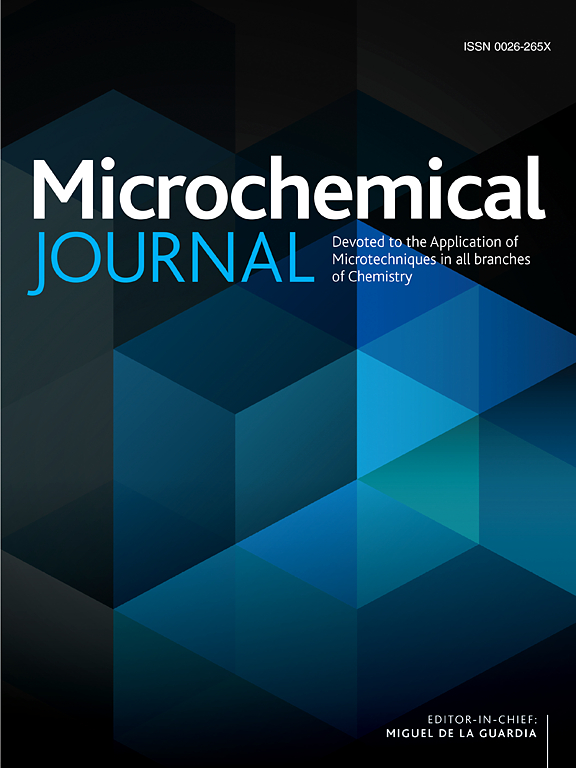农药即时检测的纸上实验室:综述
IF 4.9
2区 化学
Q1 CHEMISTRY, ANALYTICAL
引用次数: 0
摘要
不断增长的人口和不断增长的粮食需求导致农民增加农药的消费量,以防止作物损失和保持产量。农药虽然有效,但对环境、动物和人类构成严重风险,因此准确检测农药至关重要。先进的工具,如高效液相色谱法和气相色谱-质谱法提供了敏感和准确的农药检测,但由于其高成本和复杂性,无法部署到现场使用。作为回应,医疗点设备的发展激增,其中许多使用纸张作为基材。这些设备通常被称为纸上实验室设备,为检测各种样品(包括环境和生物样品)中的农药残留提供了一种低成本、便携式和定性的方法。这些设备采用了新的识别元素,如酶、适体和纳米材料,并集成了新时代的技术,如人工智能(AI)和机器学习(ML),以增强农药的光学检测。本文综述了利用光信号检测农药的纸上实验室技术的最新进展。此外,我们强调了农药检测的横向流动分析的发展,并讨论了商业化和现实环境中的挑战。本文章由计算机程序翻译,如有差异,请以英文原文为准。

Lab-on-paper for point-of-care detection of pesticides: A review
The growing population and increasing food demand have caused an increase in pesticide consumption by farmers to prevent crop loss and maintain yield. While effective, pesticides pose serious risks to the environment, animals and humans, making accurate detection of pesticides essential. Advanced tools such as high-performance liquid chromatography and gas chromatography–mass spectrometry offer sensitive and accurate detection of pesticides but cannot be deployed for on-site use because of their high cost and complexity. In response, there has been a surge in the development of point-of-care devices, many of which utilize paper as a substrate. These devices, commonly known as lab-on-paper devices, provide a low-cost, portable and qualitative method for detecting pesticide residues in a variety of samples, including environmental and biological samples. These devices have employed novel recognition elements such as enzymes, aptamers, and nanomaterials and have integrated new age technologies such as artificial intelligence (AI) and machine learning (ML) for the enhanced optical detection of pesticides. This review highlights recent advancements in lab-on-paper technologies that utilize optical signals for the detection of pesticides. Furthermore, we highlight developments involving lateral flow assays for pesticide detection and discuss the challenges in commercialization and real-life settings.
求助全文
通过发布文献求助,成功后即可免费获取论文全文。
去求助
来源期刊

Microchemical Journal
化学-分析化学
CiteScore
8.70
自引率
8.30%
发文量
1131
审稿时长
1.9 months
期刊介绍:
The Microchemical Journal is a peer reviewed journal devoted to all aspects and phases of analytical chemistry and chemical analysis. The Microchemical Journal publishes articles which are at the forefront of modern analytical chemistry and cover innovations in the techniques to the finest possible limits. This includes fundamental aspects, instrumentation, new developments, innovative and novel methods and applications including environmental and clinical field.
Traditional classical analytical methods such as spectrophotometry and titrimetry as well as established instrumentation methods such as flame and graphite furnace atomic absorption spectrometry, gas chromatography, and modified glassy or carbon electrode electrochemical methods will be considered, provided they show significant improvements and novelty compared to the established methods.
 求助内容:
求助内容: 应助结果提醒方式:
应助结果提醒方式:


